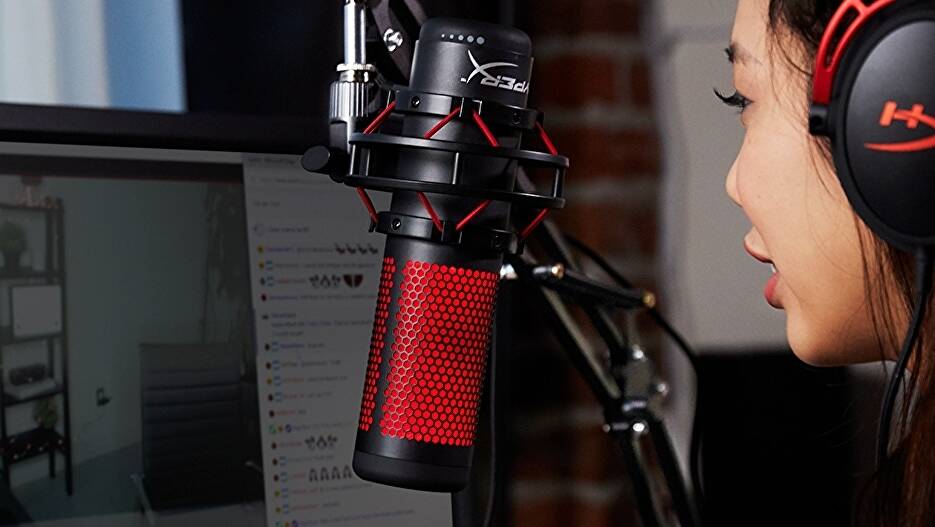
Level Up Your Marvel Rivals Gameplay
Capture your epic wins, clutch moments, and even hilarious fails with Eklipse. Easily create and share highlight reels with your friends—even if you're not streaming!
Learn MoreStill not sure which microphone is best for your gaming setup? Streamers have their own preferences for microphones based on their styles and needs. But this year, many content creators are choosing between XLR vs USB microphone.
Want to know the differences between these options? Wondering which one suits you more? Let’s find out in our XLR vs USB microphone comparison here.
USB Microphones

USB microphones, such as the Blue Snowball or Yeti, are a top choice for gamers due to their simplicity, great sound quality, and easy setup without needing additional equipment. The Blue Yeti, a popular USB microphone, is favored by many gamers for its user-friendly controls and plug-and-play convenience.
Ideal for solo streamers and gamers on the move, USB mics are perfect if you’re not planning to add more audio gear to your setup. However, if you want to expand your audio setup with multiple microphones, mixers, or processors, consider opting for an XLR microphone for enhanced flexibility.
The Blue Yeti Pro combines the best of both worlds. It offers the convenience of USB recording along with the versatility of XLR connectivity, allowing you to create studio-quality recordings. Whether you’re recording at home or in a professional studio, the Yeti Pro delivers exceptional performance.
More on Eklipse Blog >> Misconceptions on Live Streaming Equipment Every Streamer Must-Know
XLR Microphones

For those who have the flexibility to incorporate advanced audio gear into their streaming setup, XLR microphones are an excellent choice. These microphones require an audio interface, which amplifies the microphone’s signal and converts it into a digital format suitable for your computer.
Dynamic XLR mics, like the Shure SM7b, are suitable for managing loud noises and preventing clipping, making them great for energetic gamers. Condenser XLR mics, such as the Blue Spark SL, capture intricate details and clarity, enhancing your overall sound quality.
More on Eklipse Blog >> 5 Must-Have Equipment to Start Streaming on Twitch
Choosing between XLR vs USB microphone depends on factors like budget, microphone type, and sound quality. To connect XLR microphones, an audio interface is essential. Audio interfaces offer preamps to amplify the mic’s signal and convert it to digital, enabling you to use multiple XLR microphones for various setups.
When recording with XLR mics, setting up is straightforward. Connect your microphone to the interface using an XLR cable and select the interface as your input source on your streaming platform.
Accessorize for Enhanced Streaming Quality
Enhance your streaming audio quality further with these accessories:
- Broadcast Boom Arm: A premium boom arm like Compass with built-in cable management elevates production value.
- Shock Mounts: Use shock mounts like the Radius III, Ringer, or S3 to isolate microphones from noise and vibrations.
- Pop Filters: Prevent popping sounds and protect your mic with pop filters like The Pop during energetic moments.
More on Eklipse Blog >> Tips for Small Streamers: 9 Common Mistakes You Need to Avoid
Conclusion: XLR vs USB microphone
Choosing between XLR and USB microphones depends on your streaming setup and audio requirements. USB mics offer simplicity, while XLR mics provide flexibility and professional quality.
Regardless of your ultimate decision, always choose the option that aligns with your requirements. Good luck!
Maximize your Black Ops 6 rewards—Create highlights from your best gameplay with with Eklipse
Eklipse help streamer improve their social media presence with AI highlights that clip your Twitch / Kick streams automatically & converts them to TikTok / Reels / Shorts
🎮 Play. Clip. Share.
You don’t need to be a streamer to create amazing gaming clips.
Let Eklipse AI auto-detect your best moments and turn them into epic highlights!
Limited free clips available. Don't miss out!
